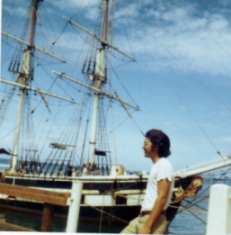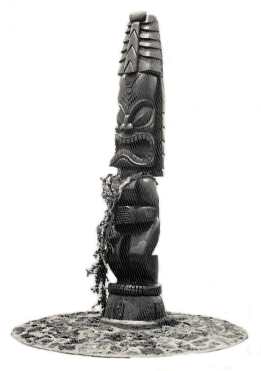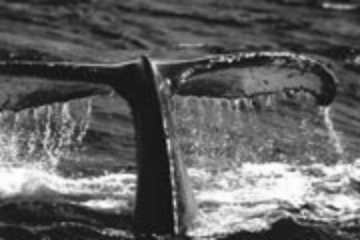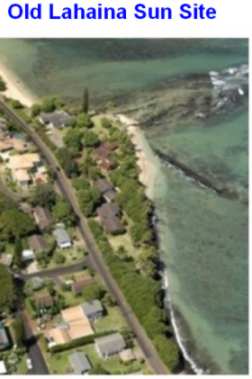Lahaina Crime Punishment
BY RUSSELL APPLE
Lahaina Crime Punishment
This article on laws in Lahaina during the 1800's is a condensation of a report-"Crime and Punishment in Lahaina during the Mid-Nineteenth Century"-prepared by Russel Apple for the Lahaina Restoration Foundation. It was published in The Lahaina Sun in 1972.
Protestant influence in the Hawaiian government in the mid 19th century resulted in attempts to legislate and enforce a New England type of Christian moral behavior-thus, Lahaina crime punishment.
It appeared to the Protestant clergy and laymen that their job was twofold. One was to check the animal urges of foreign residents and visiting sailors to eliminate this influence on Hawaiians. The other was to force on the Hawaiians a New England life style-including dress, architecture and puritan religion-to drive out even the vestiges of a thousand-year-old Polynesian life style.
A Western legal system was formally imposed in Hawaii in 1850 by passage of the "Penal Code of the Hawaiian Islands", which formalized various Lahaina crime punishment laws accumulated since oral proclamation in 1823 of an edict requiring observance of the Sabbath.
In the period between the 1823 oral edict and the 1850 printed code, Western ways and Westerners became increasingly dominant in the Hawaii government. Dominance at the top, however, had not percolated Westernization through the commoners. Most of them lived a life only midly changed from that of their parents.
In spite of the imposition of a foreign legal system, Hawaiian commoners frequently beat the Lahaina crime punishment system.
Many of the crimes enumerated by the Penal Code of 1850 were mysterious and new to Hawaiian commoners and could be committed unwittingly. Others made crimes of Hawaii's age-old practices, such as the hula, kava drinking, and comparative sexual freedom.
The 1850 Hawaii code was based on codes then in use in the American states of Massachusetts and Louisiana. It was prepared by Chief Justice William L. Lee, a consumptive young lawyer from New York who, in Honolulu enroute to Oregon for his health, saw his Christian duty in Hawaii and stayed to do it.
Under the Lahaina crime punishment code, first degree gaming-which was gaming on the Lord's Day-carried a fine which was ten times the value of the money won or lost, or 60 days confinement. A moonshiner was fined $500 or spent two years in jail. Blasphemy cost $100 or a year in jail. A swear word was worth $1 to $6. Adultery carried a $30 fine or eight months imprisonment. Fornication cost $15 or four months, but any penalty was waived if the offenders married.
Furious and heedless riding was fined anywhere from $5 to $500. Lahaina may have operated a "speed trap" similar to one in Honolulu in the 1850's. As whalers came ashore after months aboard ships, many hired horses and took off at a gallop. The immediate charge was furious and heedless riding, brought by policemen who, through the 1850's, reaped a percentage of the fines imposed. This was an early version of soaking the tourists.
Crimes which by their nature would only be committed by Hawaiians included drinking kava, selling kava without a license, violating fish taboos, plover shooting, drinking a distillate of ti root, dancing the hula, praying for spiritual power to enter an object, and praying to death.
Circumvention of the Westerners' laws, courts and punishment was a way of life to commoner Hawaiians at the beginning of the decade of the 1850's. Circumvention of the Western legal system came from a variety of factors. Among them were a closing of ranks on Maui against Western domination in government and an unorganized conspiracy of cooperation to ignore or minimize Western laws, courts and punishment.
Police received no percentage from unpaid fines from poor Hawaiians, and it was more profitable and socially acceptable to arrest sailors or foreigners.
Prior to 1852, prisoners were housed inside the coral-block fort on Maui's waterfront, a facility which lacked many of the desired accommodations. The legislature of the Kingdom of Hawaii in 1851 approved construction of a new jail for Lahaina. This new prison was built in 1852 and its surrounding coral wall was erected in 1854. (The prison may still be seen at the corner of Prison and Wainee Sts. in Lahaina.)
By 1857, hawaiian prisoners at the new jail frequently were hired out for the day or for the term of their sentence "offtimes by their friends or relatives," according to one account, "and they live in just as much comfort, with all their wants and tastes supplied as fully as the most virtuous of their neighbors. Where are the terrors of a law which has no final sanction?"
To Go To Maui Sacrificial Temples Update-Click Here
To Go To Hawaiian Words-Click Here
To Go To Hawaii Printing-Click Here
To Go To Maui Libidinous Solicitations-Click Here
Maui Lahaina Sun

Buck Quayle at the Maui Lahaina Sun bureau circa 1970

Reporter/Photographer Buck Quayle in 1971 in Maui with the Cartagenian in the background
Buck Quayle, 2011
Hawaii

Another Day At The Office Haleakala National Park

Tiki

Whale tail





